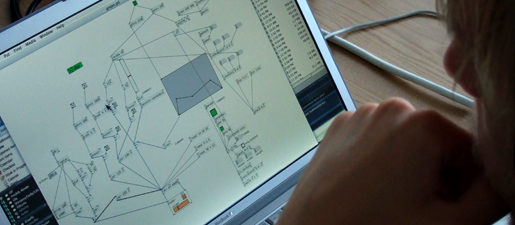PD aka Pure Data – Introduction to Pure Data

Pure Data is the third major branch of the family of patcher programming languages known as Max (Max/FTS, ISPW Max, Max/MSP, jMax, etc.) originally developed by Miller Puckette and company at IRCAM. Pd is a free and multi-platform software.
The course provides a theoretical and practical overview of the graphical programming environment and most common idioms.
The workshop is hold by Marco Donnarumma and Ioann Maria.
Pd and its community
Understanding what is Pd and the fundamental role of its community. Where to find web-based resources for learning/development process.
Pd projects review
Review of some relevant Pd-based software/tools for Live Media.
The Pd language
GUI and Configuration. Learning how to communicate with Pd and building basic process to understand the main charachteristics and potential
Visuals with GEM
Creating live visuals with GEM. Library introduction: Video real-time processing, Generative Code, Motion Tracking, Phisycal Computing, Video Players, Video Scratch. Building basic data structures.
Sound
How to deal with sound in Pd. Libraries introduction: real-time DSP, Synths, Effects, Loop Samplers, Recorders and how to connect sound with visuals. Building basic data structures
GEM Laboratory
Following few guidelines each participant develops intermediate video data structures using GEM library. Topics: real-time video processing, CG, Human-Computer Interaction, motion tracking.
SONIC Laboratory
Following few guidelines each participant develops intermediate sonic data structures using Pd’s audio objects. Topics: virtual instruments, real-time audio analysis and synthesis, Human-Computer Interaction.
Collective Briefing
The group collectively analyses the data structures produced during the laboratory and plans its possible applications in order to create two software focusing on audio-video interaction/synchronization and Human-Computer Interaction.
Software production laboratory
Participants form two groups and develop two different software using their own data structures. Live testing of the final software and collective analysis of the learning/production process.
Contact for detailed information and booking